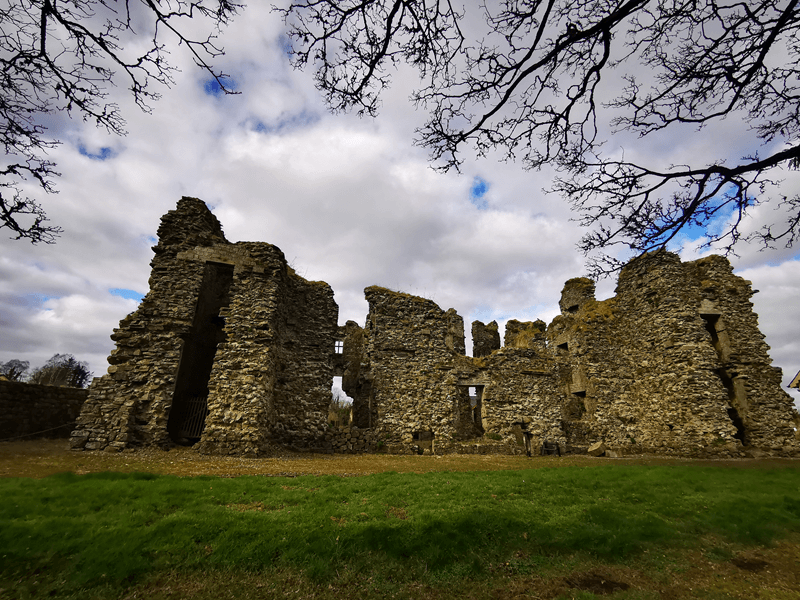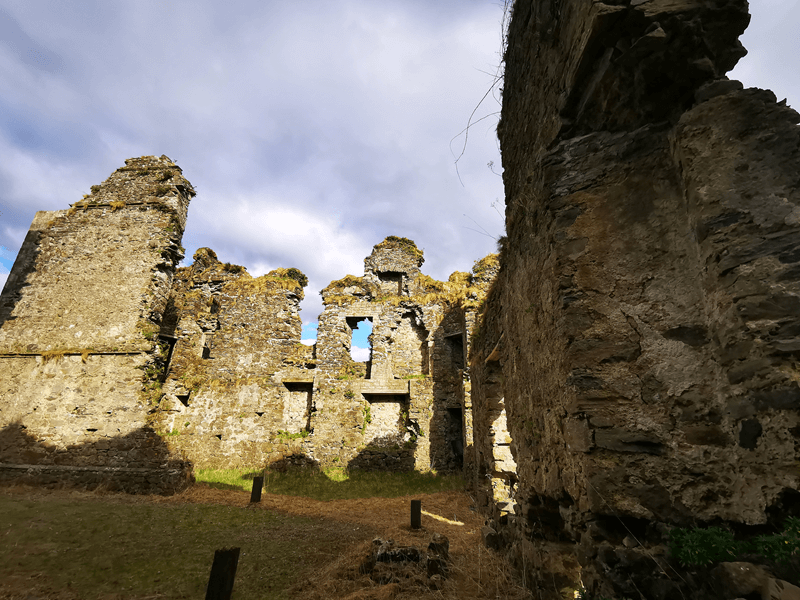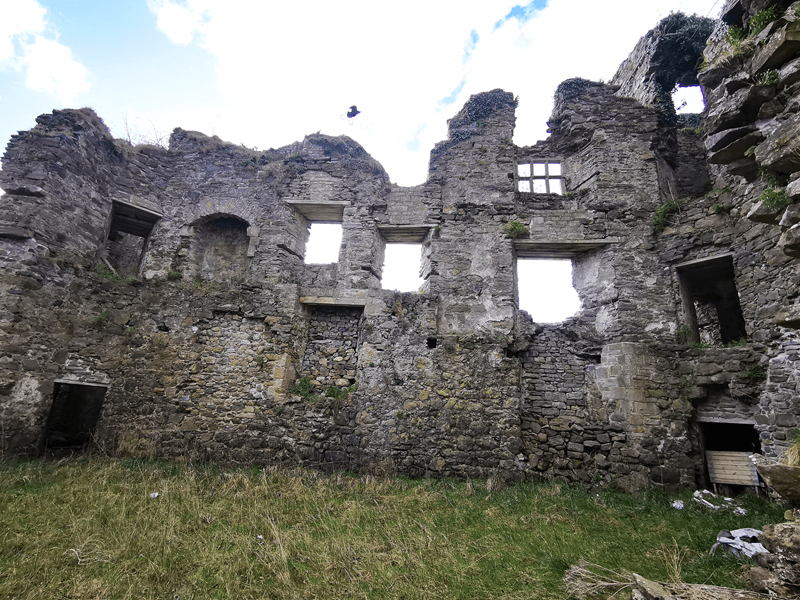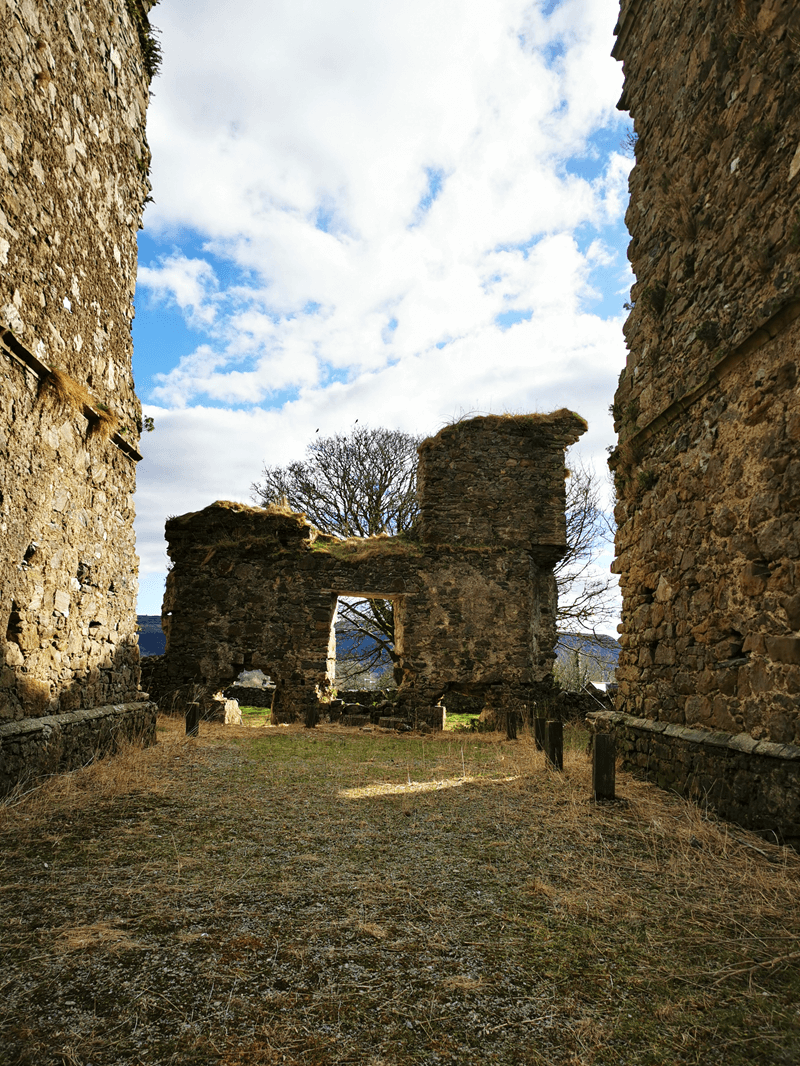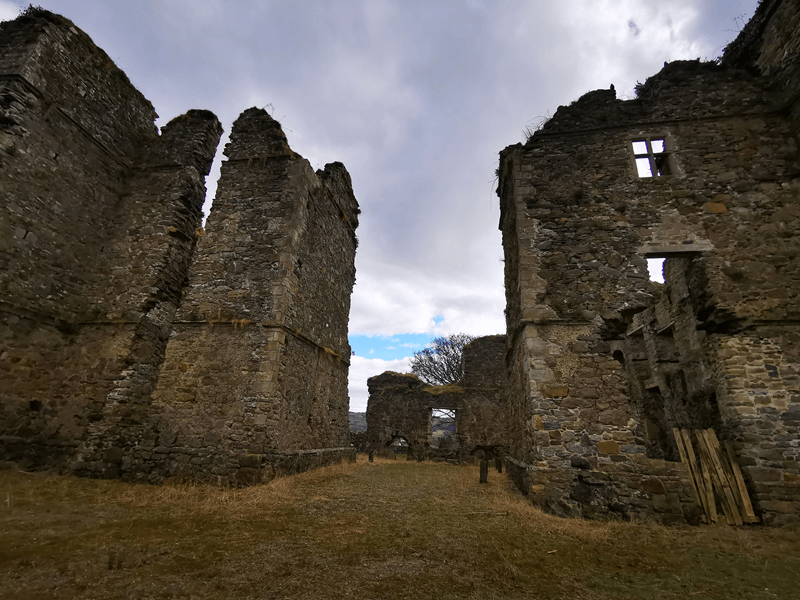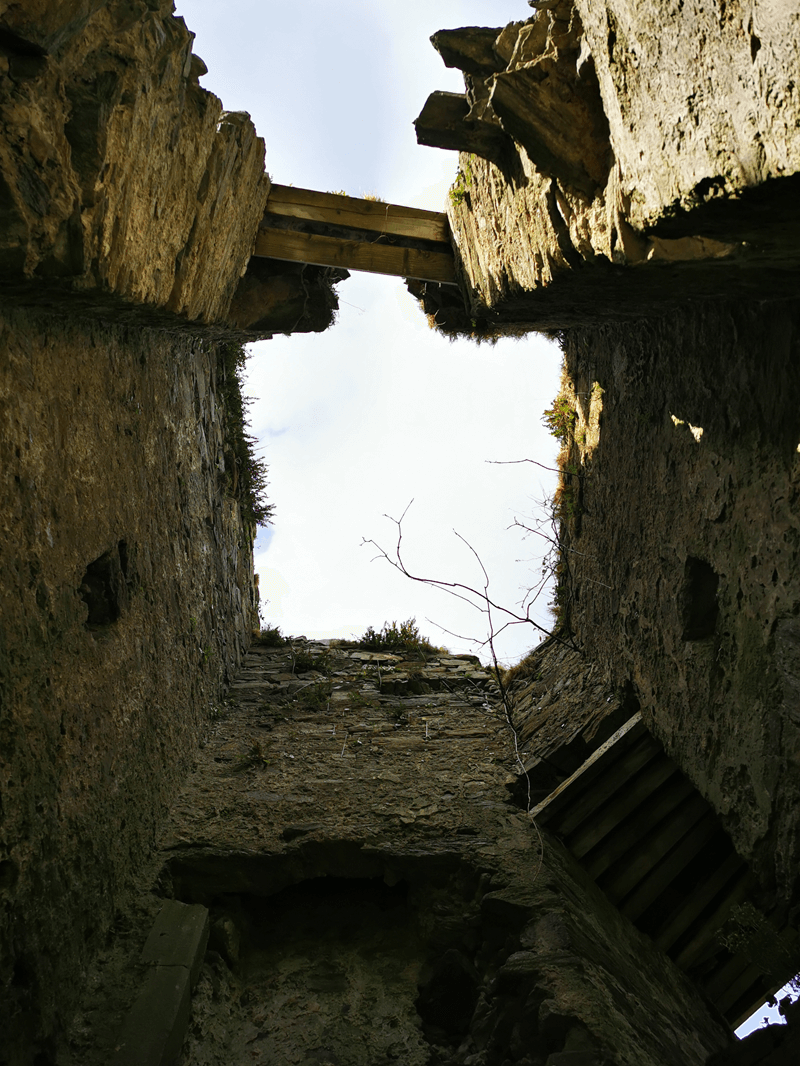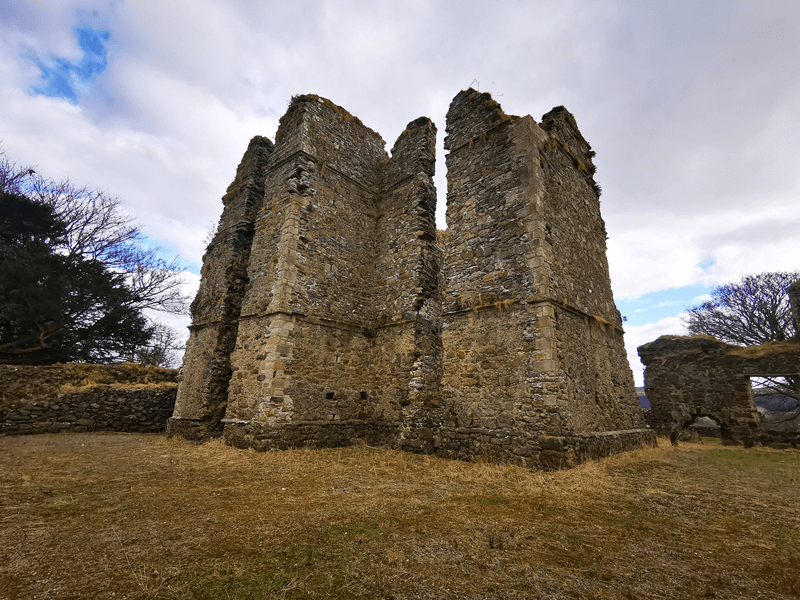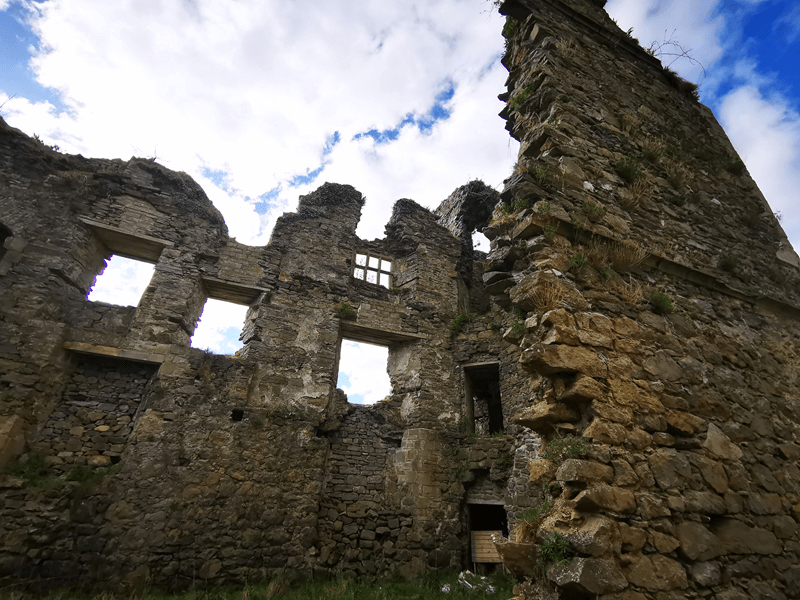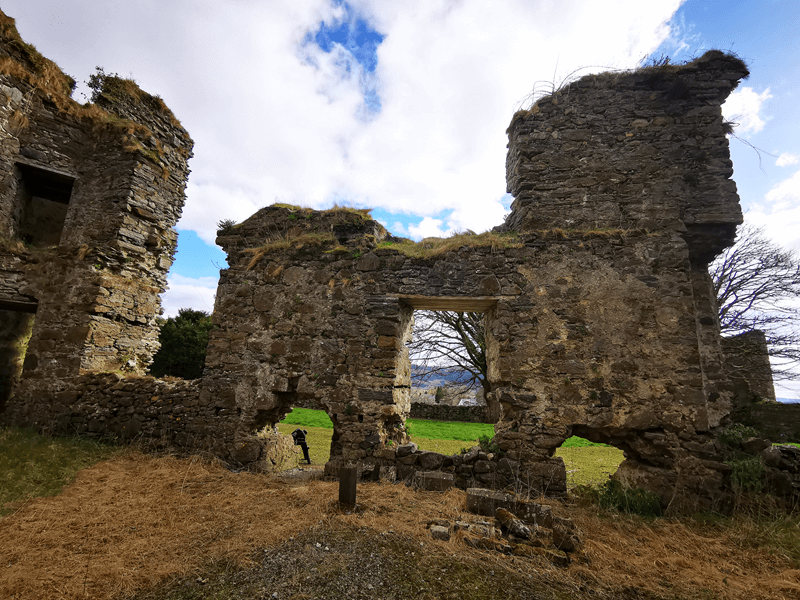History
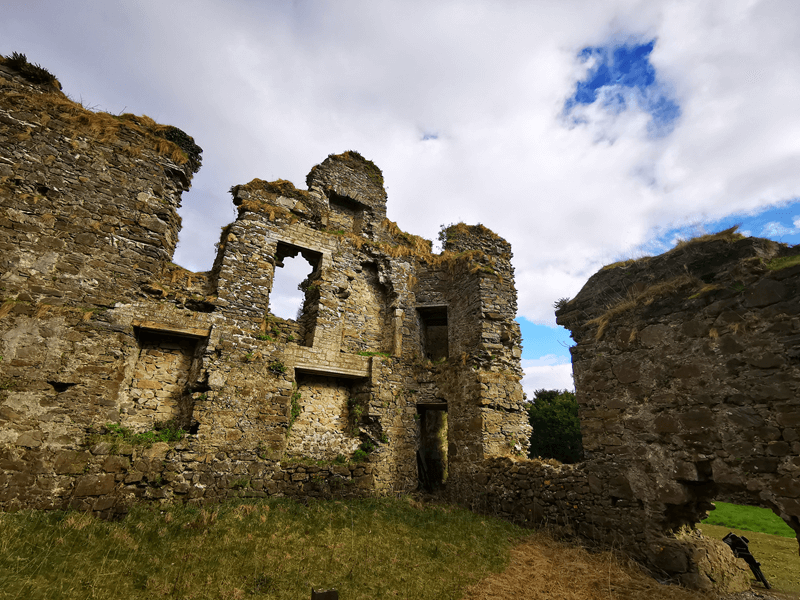
Located on an elevated point in the town of Manorhamilton, close to a tributary of the Owenmore River, Manorhamilton castle is an imposing evidence of the troubled history of Ireland and Northern Ireland.
It would have been extremely difficult for us to find out reliable information about this historical site, without the precious help of the kind landlady Maura, who led us through these solemn walls rich of history to narrate. Words are not enough to express our gratitude towards our gentle guide.
We are going to share some of the information we learned during this beautiful experience.
First of all, according to the panel placed at the entrance of the site, also signed by the Leitrim County Council [1], Manorhamilton takes its name from Sir Frederick Hamilton, a Scottish planter, who was granted lands seized from the O’Rourke family [2] in 1621, the year of Leitrim plantation. Before this, the area was called Clonmullen (or Cluain Maoláin), meaning "the hillside meadow".
Hamilton castle was built around 1634, one of six similar fortified castles of its time, and served as until 1652. Hamilton aimed at succeeding his father in law, Sir John Vaughan, as governor of Derry. Sir Frederick was in Derry in 1641 when local Irish families in Ulster rebelled against the settlers, forcing him to retreat to Manorhamilton castle, were he stayed for the next eighteen months. The Irish forces had already occupied the town of Sligo and could expand their control to the North-West but Sir Frederick impeded that, leading a garrison of Scottish forces against the Irish. Due to its position at the centre of the North Leitrim Glens, Manorhamilton represented a threat for the Irish forces in Sligo, which could be easily accessed, and it was also well connected to Ballyshannon, the Midlands and Enniskillen, an important Scottish settlement led by Sir William Cole.
Another unsuccessful attempt to destroy Manorhamilton was carried out by the Irish between 1641 and 1643, which caused a prompt retaliation from Sir Frederick, who reached Sligo, where he killed 300 people and burned the town. To give an idea of the temper of Sir Frederick, it is told that, after Manorhamilton was unsuccessfully attacked in 1643, as a reprisal, he hanged 58 of his enemies from a scaffold erected outside the castle [3, 4].
Later, in 1644, after the death of his father in law, Sir Hamilton returned to Derry with the purpose of securing the governorship of the town. Politically, Hamilton was a Scottish Presbyterian supporting the Parliament against the King during the English Civil War. He died in Scotland in 1647.
At Manorhamilton, the Scottish troops were garrisoned throughout the 1640’s and, in 1652, the castle was ultimately destroyed in one of the final engagements of the war by the Royalist forces headed by the Earls of Clanricarde, Ulick MacRichard Burke [3].
Sir Frederick was succeeded in politics by his youngest son Gustavus, elected Governor of Enniskillen in 1686 and supporter of William of Orange at the Siege of Derry and the Battle of Boyne (1691).
The estate of Manorhamilton remained in the hands of the Hamiltons till about 1789 when it passed into the hands of the Clements family. In 1878, William Sidney Clements, 3rd Earl of Leitrim, well known for mistreating his tenants, was assassinated while on his way to Manorhamilton to evict occupants.
The Castle continues to belong to the Clements until 1956, when it was bought by Robert Elliott. In 1974, it was sold to Frank O’Rourke. In 1993, the rights to the estate were acquired by Tony and Maura Daly, in whose caring hands and with the support of her daughter, after so many troubled centuries of history, Manorhamilton Castle is finally having a new fine hour.
Well, if you reached this point, it is the well deserved time for legends. It is the great poet William Butler Yeats who talks about Sir Frederick in his “From The Curse of the Fires and of the Shadows” (1897) [3, 4]. It is told that, when he decided to burn the Abbey of White Friars at Sligo in 1642, Sir Frederick ordered his five bodyguards to shoot the monks, who consequently were cursed by the abbot. After that, when the five troopers were sent by Sir Frederick to intercept two messengers looking for help, they got lost in the forest and are then led over a cliff by a vengeful sidhe.
References
- [1] Comhairle Chontae Liatroma/Leitrim County Council
- [2] IRISH HISTORIC HOUSES, Manorhamilton Castle, Castle St, Manorhamilton, Co. Leitrim
- [3] leitrimlive, The demise of Manorhamilton's castle in 1562
- [4] The Irish Aesthete, A Short and Bloody Existence
Other useful links
- Leitrim Guardian, MANORHAMILTON - 350 YEARS A GROWING
- manorhamilton.ie
- IRISH TOURISM, Manorhamilton Castle
- Wikipedia, Irish Rebellion of 1641
- Wikipedia, English Civil War
- Wikipedia, Frederick Hamilton (soldier)
- Wikipedia, Oliver Cromwell
- Wikipedia, Earl of Clanricarde
- Wikipedia, Williamite War in Ireland
- Wikipedia, Battle of the Boyne
- Wikipedia, William Clements, 3rd Earl of Leitrim
- Wikipedia, The Curse of the Fires and of the Shadows
- Wikipedia, Aos Sí
